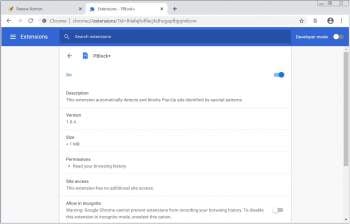-
Rafel RAT targets outdated Android phones in ransomware attacks
An open-source Android malware named 'Rafel RAT' is widely deployed by multiple cybercriminals to attack outdated devices, some aiming to lock them down with a ransomware module that demands payment on Telegram.
- June 22, 2024
- 10:19 AM
 1
1
-
Monti ransomware targets VMware ESXi servers with new Linux locker
The Monti ransomware has returned to action after a two-month hiatus, now targeting primarily legal and government organizations, and VMware ESXi servers using a new Linux variant that is vastly different from its predecessors.
- August 14, 2023
- 12:12 PM
 0
0
-
Dell Compellent hardcoded key exposes VMware vCenter admin creds
An unfixed hardcoded encryption key flaw in Dell's Compellent Integration Tools for VMware (CITV) allows attackers to decrypt stored vCenter admin credentials and retrieve the cleartext password.
- August 10, 2023
- 10:38 AM
 1
1
-
Iranian hackers use new Moneybird ransomware to attack Israeli orgs
A suspected Iranian state-supported threat actor known as 'Agrius' is now deploying a new ransomware strain named 'Moneybird' against Israeli organizations.
- May 24, 2023
- 12:28 PM
 0
0
-
Amazon S3 will now encrypt all new data with AES-256 by default
Amazon Simple Storage Service (S3) will now automatically encrypt all new objects added on buckets on the server side, using AES-256 by default.
- January 06, 2023
- 11:32 AM
 0
0
-
Linux malware authors use Ezuri Golang crypter for zero detection
Multiple malware authors are using the "Ezuri" crypter and memory loader written in Go to evade detection by antivirus products. Source code for Ezuri is available on GitHub for anyone to use.
- January 07, 2021
- 06:00 AM
 2
2
-
Canon DSLR Camera Infected with Ransomware Over the Air
Vulnerabilities in the image transfer protocol used in digital cameras enabled a security researcher to infect with ransomware a Canon EOS 80D DSLR over a Wifi connection.
- August 11, 2019
- 02:00 PM
 1
1
-
Google Introduces Adiantum Storage Encryption to Low-End Android Devices
Google unveiled today the new Adiantium storage encryption method for devices without cryptographic acceleration and running Android 9 or later on processors which do not support AES or other crypto instructions.
- February 07, 2019
- 02:13 PM
 0
0
-
Fantom Ransomware Encrypts your Files while pretending to be Windows Update
A new ransomware called Fantom was discovered by AVG malware researcher Jakub Kroustek that is based on the open-source EDA2 ransomware project. The Fantom Ransomware uses an interesting feature of displaying a fake Windows Update screen that pretends Windows is installing a new critical update while its encrypting files.
- August 25, 2016
- 01:17 PM
 5
5
















